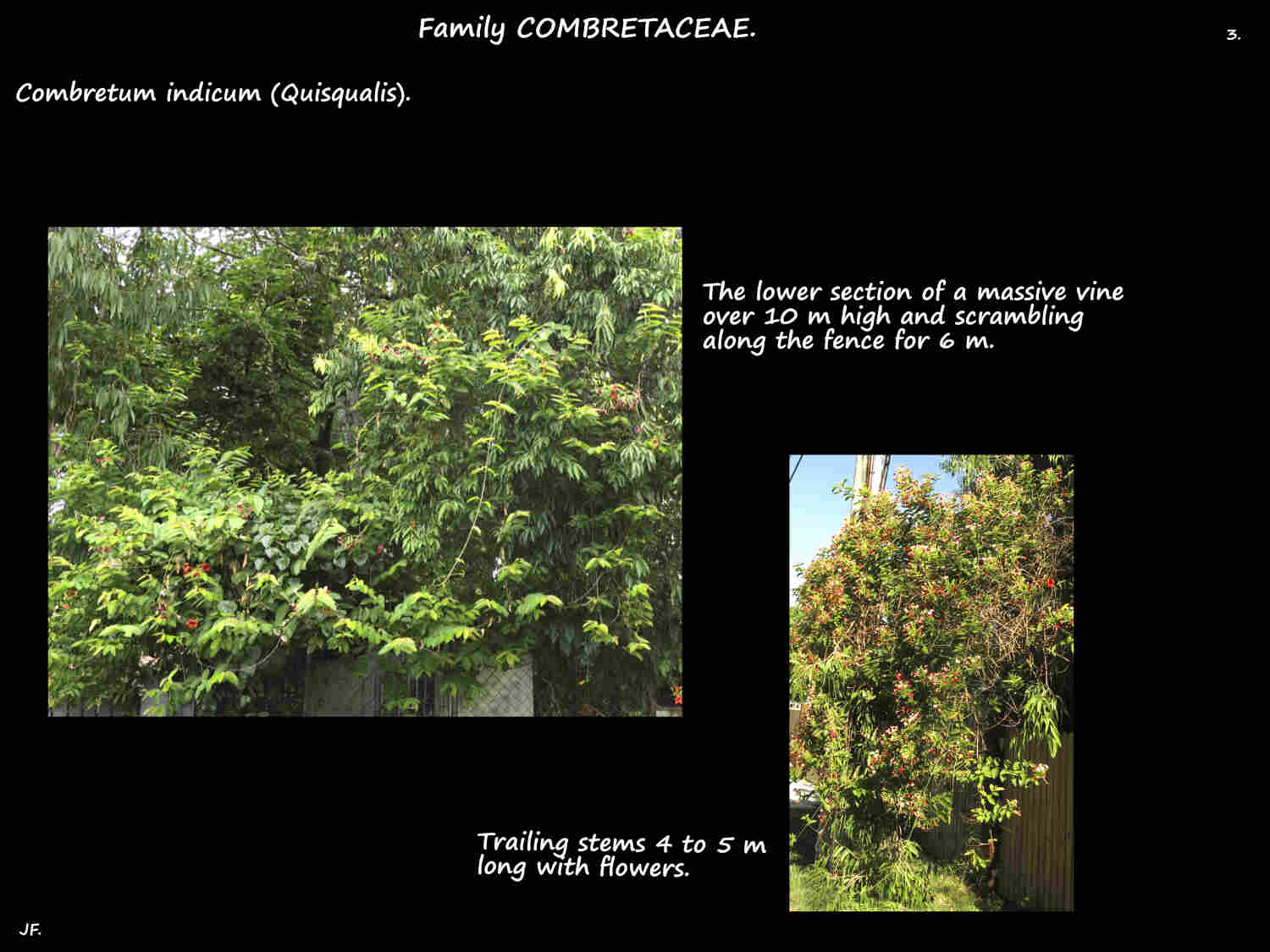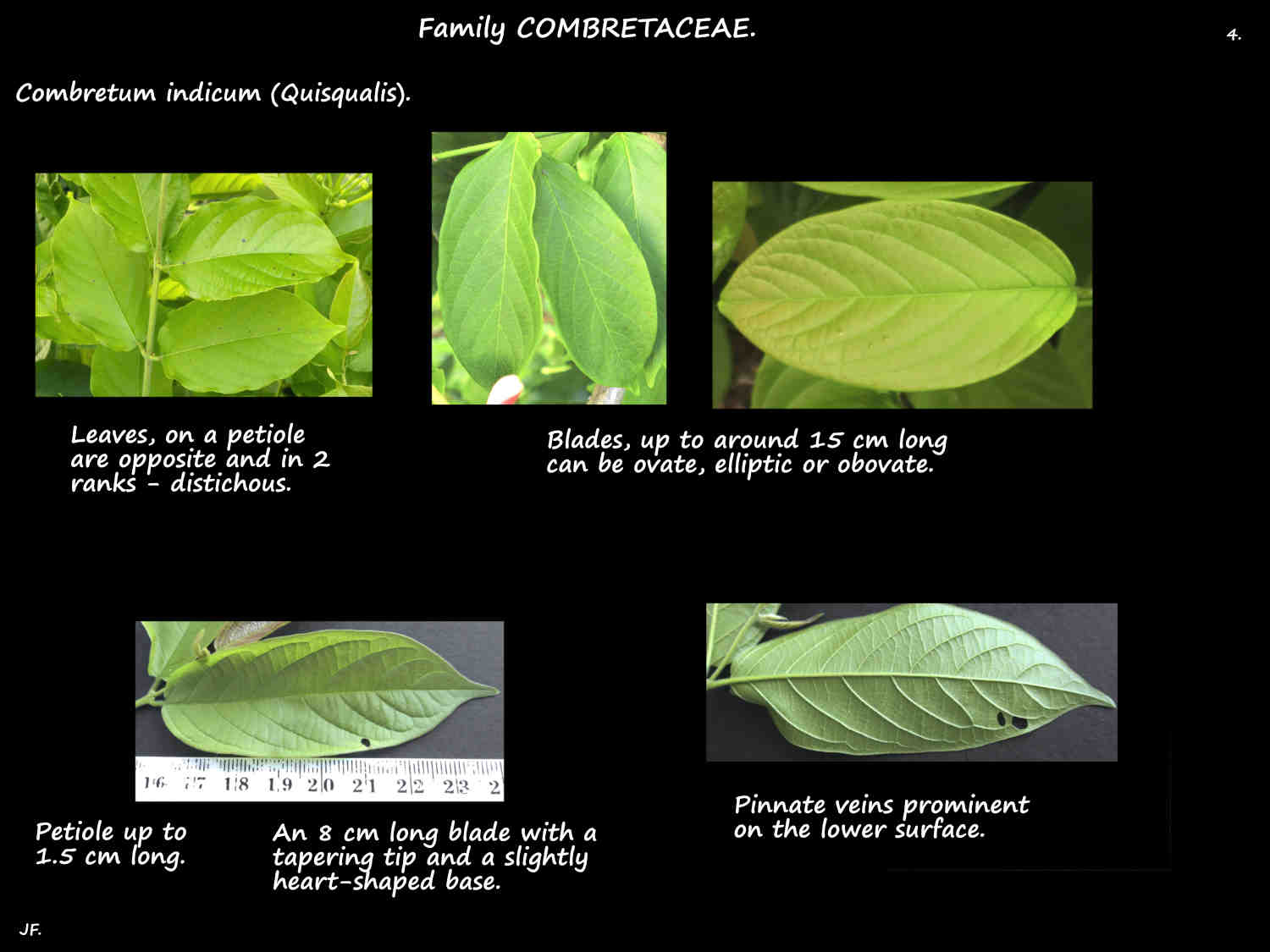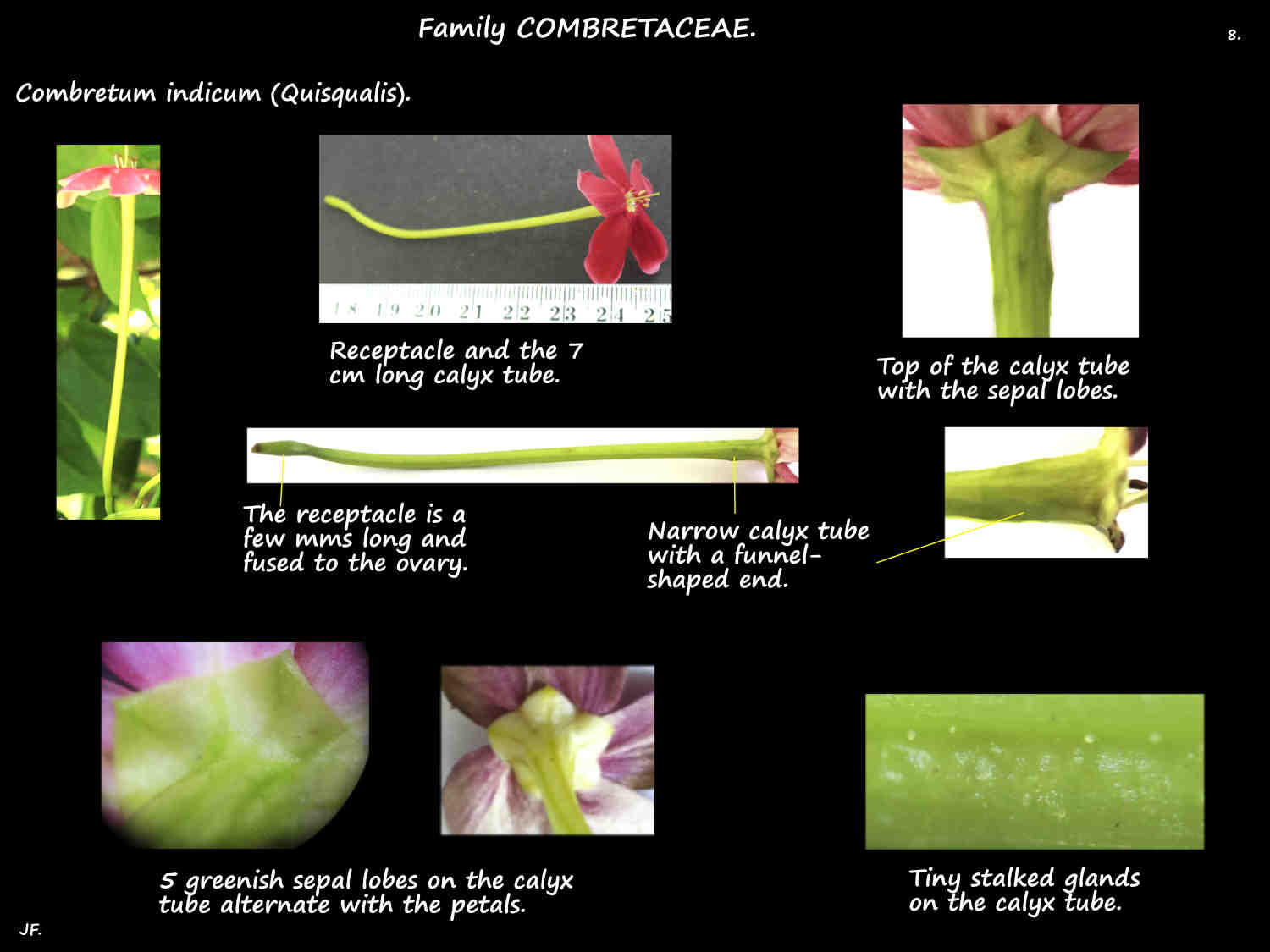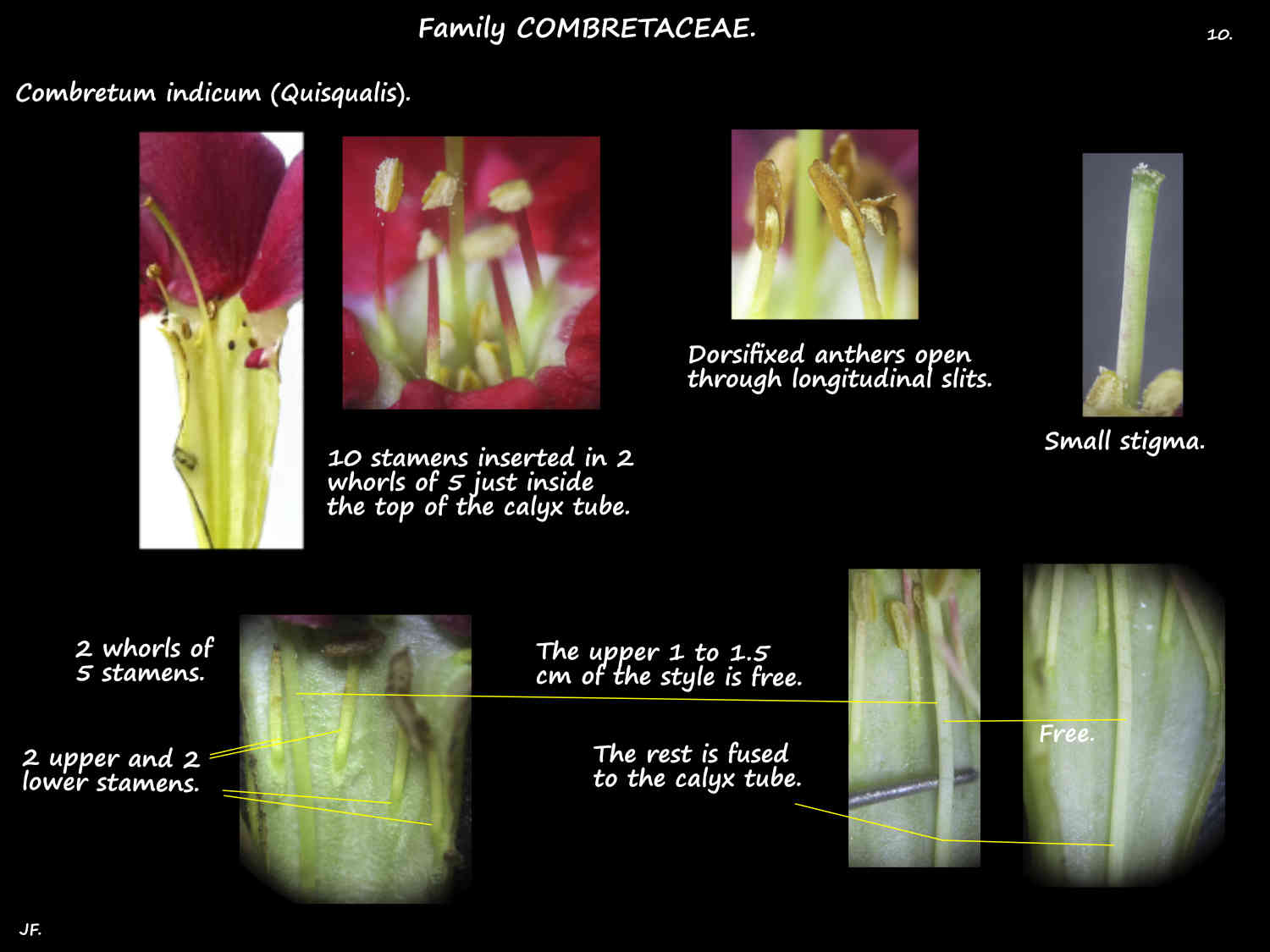Combretum indicum.
Previously known as Quisqualis indica.
Quisqualis or Chinese honeysuckle is native to tropical Africa, India, China and S.E. Asia.
Commonly seen in Brisbane gardens it is naturalised in areas of S. E. Queensland.
Initially a shrub around 2 m high it may use its twining stems to climb a short distance.
However it becomes a vigorous climber after developing ‘thorns’ or ‘spines’.
When leaves fall the petiole may remain, harden and become a curved spine.
These help the stems to reach up to 20 m in height.
Parts have hairs and stalked glands.
The leaves, on a petiole up to 1.5 cm long are opposite to sub-opposite.
They are up to 15 (19) cm long and 9 cm wide.
Blades can be elliptic, ovate or obovate with a tapering pointed tip and a rounded or wedge-shaped base.
There are few to many hairs and stalked glands mainly on the veins on the lower surface.
Inflorescences are terminal on the main and short side branches.
The spikes, up to 12 cm long have dense hairs and stalked glands on the midrib.
There are narrow sometimes leafy bracts up to 1 cm long.
Flowers have a pedicel up to 1 mm long.
Flowers are present for most of the year and a large plant can have thousands.
The receptacle, 3.5 mm long has dense hairs and some stalked glands.
The narrow calyx tube, up to 8 cm long widens slightly at the top.
The outer surface has hairs sometimes dense and a variable number of stalked glands.
The 4 or 5 triangular sepal lobes on the rim, around 3 mm long have hairs on both surfaces that are often dense.
The 5 oblong petals, up to 2 cm long insert onto the calyx tube.
They have hairs on both surfaces.
Flowers open with white petals that become pink on the second day then red.
They grow quickly so all colours are present at the same time.
Cultivars have flowers that are all pink, variegated red and white or age to a deep red or purple.
The 10 stamens are inserted onto the calyx tube in 2 whorls.
The 8 mm dorsifixed anthers, on 8 mm filaments open through longitudinal slits.
The anthers lie in the top of the calyx tube or extend just past it.
There is no nectary disk.
The inferior ovary has 1 locule with 2 ovules attached at the top.
The style, up to 8 cm long has a small spherical stigma.
The upper 1 to 1.5 cm of the style is free but the rest is fused to the inner surface of the calyx tube.
The fruit are dark brown ellipsoidal drupes up to 4 or 5 cm long.
The rarely seen drupes have 5 longitudinal ridges or wings with a sharp edge.
Young fruit have dense hairs and stalked glands but these gradually disappear.
There is 1 seed.
J.F.













